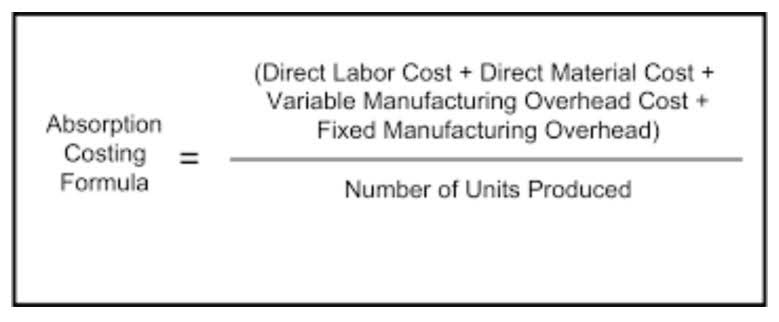Chart of Accounts Legal Dictionary

It is crucial to maintain meticulous record-keeping and to keep separate accounts, especially for trust accounting as required by state bar association rules. Consistent and accurate bookkeeping tasks should be carried out according to a set schedule, whether daily, weekly, or monthly. When hiring an accountant for your law firm, it’s crucial to ask about their experience in handling business expenses deductions specific to law firms. Inquire about their understanding of tax obligations for law firms including payroll services they can provide.
Client expense accounts
Customization is the proactive step toward financial success in the competitive legal industry. Regular reviews and updates enable law firms to stay agile and responsive to the ever-changing demands of the legal landscape. InvoiceSherpa supports accounting for law firms by saving you time and energy, increasing your cash flow, and getting invoices paid faster. InvoiceSherpa automates your accounts receivable with reminders and collection software. Because InvoiceSherpa integrates with Clio, you can bring contacts and invoices from Clio directly into InvoiceSherpa.

Segregated liabilities
With double-entry accounting, it becomes easier to spot mistakes and maintain precise financial records for law chart of accounts for law firm firms. Hiring an accountant who understands the significance of the chart of accounts can greatly benefit a law firm. They can ensure that all client funds are appropriately allocated and tracked, preventing any potential mishandling or confusion. When clients trust a firm with their legal issues, they also expect that their money will be handled correctly.

How to succeed at accounting for law firms and bookkeeping in 2022
- Technology tools like Clio Manage can aid in managing client funds within trust accounts and conducting three-way reconciliations, ensuring accuracy and transparency in handling clients’ monies.
- This includes distinguishing client funds from the operational finances of the law firm, ensuring clarity and compliance with regulatory requirements.
- Most of the time, the equity partners or shareholders share the firm’s gains and losses based on how much they own of the business.
- Having a law firm chart of accounts is more than just an accounting best practice— it’s a tool to keep your firm’s financial data organized.
- Hiring an accountant who knows how law firms work adds even more power for growth, making sure every dollar counts.
- Customization ensures the Chart of Accounts aligns with the specific financial demands of a firm’s practice areas.
Consider asking the prospective accountant about their familiarity with employment tax regulations and whether they have worked with independent contractors common in the legal industry. With QuickBooks, lawyers can easily conduct three-way reconciliations, saving time and reducing errors. Moreover, QuickBooks automates the invoicing process for attorneys, which not only saves time but also ensures accuracy. A key feature of CARET Legal is its ability to provide real-time updates and accounting integrated systems. This ensures that any changes made in one part of the system are automatically reflected throughout.
- While it’s important to do your own research (and you may want to consult with your accountant), you can use the samples and the template in this post to guide you.
- When setting up your firm’s chart of accounts, the details matter, so be sure to review each item to make sure that it is always properly attributed in your accounting system.
- It also simplifies the generation of financial statements, saving time and ensuring accuracy.
- It helps in organizing and categorizing all financial transactions for a law firm.
- Law firms typically keep both client account records and firm account records.
- This ensures that any changes made in one part of the system are automatically reflected throughout.

Failing to make this distinction can lead to compliance issues and inaccurate financial records, impacting the firm’s reputation and potential for growth. Understanding key accounting terms is essential for law firms to effectively manage their finances. Terms such as chart of accounts, double-entry accounting, IOLTA, trust accounting, and three-way reconciliation are crucial for maintaining financial transparency and compliance. Proper accounting for law firms is crucial for compliance with regulatory requirements, ensuring business growth, and protecting the firm’s reputation. Failure to maintain accurate financial records can lead to legal and ethical consequences. CARET Legal, a specialized legal practice management software, makes it easy to manage law firm accounting.
Consistency in Bookkeeping

Transitioning from understanding income and revenue differentiation, it’s crucial to address the issue of data entry errors in legal accounting. These errors can lead to financial discrepancies and inaccuracies in records, potentially resulting in mismanagement of client funds within trust accounts for law firms. By carefully comparing these three sets of data, law firms can maintain stricter control over their financial transactions and ensure compliance with regulatory requirements. As we discuss in more detail in our guide to trust accounting for law firms, it’s essential that lawyers and law firms correctly manage client funds in trust. By doing so, lawyers can stay compliant with the exact trust accounting rules for their applicable jurisdiction.
Lascia un commento Annulla risposta
Categorie
- ! Без рубрики (382)
- 1 (83)
- 1 win (4)
- 10 (1)
- 10000_prod (1)
- 10000_ru (6)
- 10000_tr (9)
- 10000_tr2 (5)
- 10000_wa (5)
- 10000sat2 (4)
- 10000sat3 (6)
- 10000sat4 (3)
- 10000sat5 (5)
- 10000sat6 (1)
- 10000sat7 (2)
- 10020_wa (4)
- 10050sat (4)
- 10050tr (3)
- 10060_wa (3)
- 10060sat (4)
- 10065_wa (3)
- 10080_sat (4)
- 10100_sat (1)
- 10100_tr (4)
- 10100sat (1)
- 10110_sat (3)
- 10120_sat (1)
- 10120_tr (3)
- 10125_sat (1)
- 10130_wa (5)
- 10150_sat (3)
- 10150_tr2 (4)
- 10156_wa (2)
- 10170_sat (1)
- 10170_wa (4)
- 10200_prod2 (1)
- 10200_sat2 (1)
- 10200_tr (2)
- 10200_wa (7)
- 10205_wa (2)
- 10300sat (3)
- 10310_tr (4)
- 10350_tr (2)
- 10350_wa (5)
- 10350tr (3)
- 10360_wa (4)
- 10400_sat (3)
- 10400_sat2 (4)
- 1041i (1)
- 10440_tr (5)
- 10450_wa (8)
- 10465_tr (4)
- 10480_tr (6)
- 10490_wa (5)
- 10500_sat (11)
- 10500_sat2 (1)
- 10500_sat3 (3)
- 10500_wa2 (3)
- 10500_wa3 (3)
- 10500_wa4 (2)
- 10520_tr (2)
- 10520_wa (5)
- 10525_sat (4)
- 10550_sat (1)
- 10550_sat2 (3)
- 10550_wa (4)
- 10600_prod (3)
- 10600_prod2 (2)
- 10600_sat2 (1)
- 10600_tr (5)
- 10600_wa (9)
- 10650_wa (4)
- 10650_wa2 (3)
- 10655_pr (1)
- 10700_sat (2)
- 10700_wa (6)
- 10710_wa (4)
- 10750_wa (5)
- 10800_tr (3)
- 10800_wa (1)
- 10830_tr (4)
- 10831_wa (2)
- 10850_sat (1)
- 10900_wa (7)
- 11_com.snai.dashgamered (1)
- 11000_wa (3)
- 11000prod (5)
- 11000prod2 (4)
- 11000prod4 (4)
- 11075_tr (5)
- 11100_prod (3)
- 11200_prod (1)
- 11275_ru (3)
- 11380_wa (2)
- 11400_wa (3)
- 11800_wa (4)
- 11900_wa (4)
- 15381 (1)
- 1Bet (1)
- 1win (77)
- 1win apostas (1)
- 1Win AZ Casino (2)
- 1win Azerbajany (5)
- 1Win Bénin (1)
- 1Win bet (2)
- 1Win Brasil (6)
- 1win Brazil (5)
- 1win casino (12)
- 1WIN Casino Brasil (1)
- 1win chile (2)
- 1win India (23)
- 1WIN Official In Russia (10)
- 1win Turkiye (7)
- 1win uzbekistan (5)
- 1winRussia (3)
- 1xbet (6)
- 1xbet apk (12)
- 1xbet Argentina (4)
- 1xbet AZ Casino (2)
- 1xbet Azerbajan (3)
- 1xbet Brazil (3)
- 1xbet CASINO AZ (2)
- 1xbet casino BD (1)
- 1xbet Casino Online (2)
- 1xbet giriş (3)
- 1xbet Online Casino (3)
- 1xbet qeydiyyat (6)
- 1xbet-2.com (1)
- 1xSlots (17)
- 2 (18)
- 2090 (2)
- 20Bet (1)
- 21 (1)
- 212 (2)
- 22 Bet (1)
- 222 (2)
- 22Bet (1)
- 241536 (1)
- 2568 (2)
- 3 Reyes Casino (1)
- 30 (1)
- 31 (1)
- 32 (1)
- 3650_tr (2)
- 5 (1)
- 5000_tr (4)
- 5000_tr2 (4)
- 5240_tr (2)
- 5645 lera (1)
- 5760_ru (3)
- 642i (1)
- 6570_ru (4)
- 6900_tr (3)
- 691 (2)
- 7150_tr (3)
- 7240_ru (3)
- 7300_ru (3)
- 7350_ru (3)
- 7375_ru (4)
- 7400_ru (3)
- 7410_ru (2)
- 7430_tr (4)
- 7620_ru (4)
- 777 казино (1)
- 7900_ru (6)
- 7k casino (8)
- 7к казино (3)
- 8000_ru (5)
- 8000_wa (4)
- 8040_ru (4)
- 8100_wa (5)
- 8150_wa (6)
- 8298_prod (1)
- 8300_wa (4)
- 8435_wa (4)
- 8450_ru (3)
- 8470_ru (3)
- 8500_tr (3)
- 8590_tr (4)
- 8600_ru (6)
- 8600_tr (1)
- 8600_tr2 (2)
- 8670_ru (3)
- 8700_wa (1)
- 8746_wa (5)
- 8800_ru (3)
- 888888 (1)
- 888starz (2)
- 888starz bd (1)
- 888starz Casino (3)
- 8900_ru (4)
- 8900_ru2 (2)
- 8900_tr (3)
- 8930_ru (2)
- 8990_wa (4)
- 9000_wa (4)
- 9000_wa2 (4)
- 9020_wa (4)
- 9050_tr (1)
- 9065_tr (4)
- 9080_ru (2)
- 9090_wa (4)
- 9100_wa (12)
- 9150_wa (4)
- 9150-2_ru (3)
- 9150tr (1)
- 9160tr (2)
- 9185_ru (7)
- 9200_ru (11)
- 9200_ru2 (6)
- 9200_wa (4)
- 9270_ru (3)
- 9300_ru (3)
- 9300_wa (10)
- 9330_ru (3)
- 9350_wa (3)
- 9380_wa (4)
- 9400_ru (9)
- 9400_wa (4)
- 9460_ru (6)
- 9500_2ru (8)
- 9500_3ru (8)
- 9500_wa (5)
- 9500_wa2 (3)
- 9560_ru (6)
- 9590_wa (5)
- 9600_prod (2)
- 9600_prod2 (1)
- 9600_prod3 (1)
- 9600_wa (3)
- 9617_tr (3)
- 9620_ru (8)
- 9650_wa (3)
- 9655_wa (4)
- 9670_wa (4)
- 9700_wa (3)
- 9720_sat (1)
- 9750_ru (6)
- 9750_wa (1)
- 9760_wa (6)
- 9780_wa (4)
- 9800_sat2 (1)
- 9800_wa (8)
- 9820_ru (8)
- 9820_wa (4)
- 9835_sat (1)
- 9860_wa (4)
- 9890_wa (2)
- 9900_wa (7)
- 9915_wa (4)
- 9925_wa (5)
- 9950_tr (2)
- 9950_wa (3)
- 9985_sat (1)
- 9990_tr (2)
- AI Humanizer (2)
- AI News (12)
- Architecture (1)
- Arkada Casino (3)
- armestheaterwien (1)
- article (3)
- articles (1)
- Artifical Intelligence (1)
- Artificial Intelligence (1)
- Artificial intelligence (AI) (2)
- Asia99 (2)
- au (1)
- Audiobooks24 (3)
- Aviator (3)
- aviator brazil (1)
- AZ Most BET (1)
- az-1win (1)
- Azerbajany Mostbet (3)
- Azur Casino (1)
- b1bet apostas (3)
- Baccarat Online (1)
- Bahisyasal (7)
- Bahsegel (3)
- Bankobet (1)
- Basaribet (3)
- bbrbet mx (1)
- BC Game (1)
- Best Australian Online Casinos and Pokies (1)
- Best Australian Online Casinos and Pokies with PayID in 2025 (1)
- Best Nationality Man To Datehttps://3.bp.blogspot.com/-kBknlnppsDo/VogAaAUQObI/AAAAAAAAGIQ/GwgzMkHTbi4/s400/beautiful-bbw-13_mini.jpg|loving someone long distance (1)
- Best Online Casino (6)
- Best Online Casinos (8)
- Best Online Casinos 2025 (1)
- Best Online Sportsbooks (1)
- Best Replica Rolex Watches (1)
- Best Slot Sites (1)
- best-polskie-kasyno (1)
- Beste Casino's in België (1)
- Beste Sites (4)
- Bet22 Casino (1)
- betclic (1)
- Betify (1)
- betjam casino (1)
- Betmotion brazil (1)
- Bettilt (3)
- Bettilt giris (2)
- Betting (4)
- Betting Brokers (6)
- Betway (1)
- betwinner-th.com (1)
- betwinnertr-giris.com (1)
- BH (7)
- bh50 bahis forum (2)
- bht2 (3)
- bitcoin plinko (1)
- bitcoin roulette (1)
- bizzo casino (1)
- Blitz (1)
- Blog (11)
- bloggs (1)
- blogs (2)
- bonanza dec (3)
- book of ra (1)
- Bookkeeping (90)
- Bootcamp de programação (2)
- Bootcamp de Programación (3)
- boutiq switch disposable (2)
- brawl pirates 1win (1)
- Bruno Casino (1)
- BT (2)
- bt50 flaming hot slot (4)
- btt2 (2)
- casibom tr (1)
- Casino (128)
- Casino 1Win (1)
- Casino 1xSlots (1)
- Casino 365 (1)
- casino 7k (2)
- casino en ligne (4)
- casino en ligne fr (3)
- casino en línea (7)
- Casino non AAMS (2)
- casino onlina ca (6)
- Casino Online (75)
- casino online 1win (2)
- casino online ar (19)
- CASINO ONLINE CZ (2)
- casinò online it (10)
- Casino Sans Wager (1)
- Casino Slots (2)
- casino UK (1)
- casino zonder crucks netherlands (1)
- casino-online (1)
- casinoly (1)
- casinomaxisites oyna (3)
- casinos (3)
- Casinos Online (4)
- casinos-nongamstop.uk19 (1)
- cassino online (3)
- cernet (1)
- česká online casina (1)
- Česká online kasina (2)
- Champion Casino (1)
- CheckBasinas (1)
- Chicken Road (1)
- chicken road CA (1)
- Chicken Road Game (1)
- chicken road UK (1)
- Christchurch Online Casino (1)
- Codere AR (3)
- codere mexico (3)
- corporativodehospitales.com.mx (2) (1)
- Crown Pokies online (2)
- Crypto Bot (1)
- crypto crash game (1)
- crypto wallet (6)
- Crypto-PBN (3)
- CryptoBoss казино (2)
- Cryptocurrency exchange (5)
- Cryptocurrency investments (1)
- Cryptocurrency News (8)
- Cryptocurrency service (13)
- Cược (1)
- data macau (2)
- Dating A Foreigner (1)
- Dating Someone From A Different Country (2)
- DE (1)
- Deployment (2)
- Diplom-1 (1)
- Diplom-4 (1)
- Diploms (2)
- DKC Transport (1)
- done 15381 (2)
- Dragon Link Pokies (1)
- Dragon казино (1)
- DragonMoney (3)
- e-Kitap Depolama (3)
- EASY MOVING (2)
- Education (5)
- En (1)
- faethonolympusmarathon.gr (2)
- fairness-symposium (1)
- FairSpin (3)
- Fall In Love With Someone You Don't Share A Common Language (1)
- Financial Marketplace in the USA (2)
- FinTech (39)
- Forex ENG (2)
- Forex Trading (1)
- Forex Trading (45)
- Fortune Mouse (1)
- Fortune Tiger (7)
- fr (2)
- Free AI Humanizer (1)
- Free Porn Videos (1)
- Fundalor Casino (2)
- Fusion (1)
- fxdu.net (1)
- g (1)
- Gama Casino (1)
- Gambling (15)
- Gaming (1)
- geheimeschnatterei (1)
- gemeinde-hirm (1)
- Generative AI (3)
- GGbet ГГбет (1)
- ghostwriter (1)
- gpt 5 capabilities 5 (1)
- Hailuo AI (3)
- hd porn (1)
- hello world (1)
- Hitbet (1)
- Honey money казино (1)
- horseracinggame (1)
- How Can I Date A Girl From A Different Country (1)
- How To Date Someone Internationally (1)
- Hype casino (2)
- iGaming (93)
- India Mostbet (5)
- Indian generic price (2)
- Infrastructure (1)
- innokozani.gr (1)
- Instances (1)
- Investimentos em criptomoedas (1)
- Investissements en cryptomonnaie (1)
- istanbulculinary.com.tr (1)
- IT Education (5)
- IT Support Orange County (1)
- IT Vacancies (7)
- IT Вакансії (8)
- IT Образование (21)
- IT Освіта (1)
- IviBet (1)
- izzi (2)
- jardiance (1)
- jeetbuzz (1)
- JeetCity Casino (1)
- JetX (1)
- Juegos de casino en línea en Sudamérica (1)
- Kasyno Online (19)
- Kasyno Online PL (4)
- Kazino (18)
- king johnnie (5)
- kupit diplom (1)
- lavidaostrava.cz (1)
- Ledger (1)
- ledger live (10)
- legit mail order brides (2)
- leovegas finland (3)
- LeoVegas India (7)
- LeoVegas Sweden (6)
- Lex Casino (2)
- LinkedIn Scraper (1)
- Logging (1)
- Lucky Green casino (2)
- lucky jet (7)
- Lucky Star (1)
- Lucky Star Casino (1)
- Luxury Transportation Services in Seattle (4)
- Managed IT Services Orange County (1)
- Maribet casino TR (1)
- Marriage Certificate Requirements (1)
- marsbahis (1)
- Masalbet (1)
- MaxiMarkets (1)
- medic (2)
- mega888 (4)
- mega888 apk (3)
- mega888 download (2)
- Meilleur casino en ligne (1)
- Mejores casinos online España (1)
- Melhores Cassinos Online (1)
- Migliori Casinò (1)
- More Magic Apple (2)
- most bet (1)
- Most Romantic Honeymoon Destinations (1)
- Mostbet (19)
- mostbet apk (22)
- Mostbet AZ (4)
- mostbet az 90 (19)
- Mostbet AZ Casino (3)
- mostbet azerbaijan (5)
- Mostbet Casino Azerbaycan (1)
- mostbet casino online (1)
- Mostbet Casino UZ Online (1)
- mostbet giriş (9)
- Mostbet India (4)
- mostbet kirish (2)
- Mostbet Online (1)
- mostbet oyna (3)
- mostbet ozbekistonda (5)
- mostbet royxatga olish (2)
- Mostbet Russia (11)
- mostbet tr (1)
- mostbet UZ (12)
- Mostbet UZ Casino (2)
- Mostbet UZ Casino Online (2)
- Mostbet UZ Kirish (1)
- Mostbet Uzbekistan (3)
- mostbet-ru-serg (8)
- mostbetcasino.live (1)
- mostbetcasinom (1)
- MrBeast (1)
- MrBeast Casino (1)
- Mystake Casino (1)
- n_bh (5)
- n_by (1)
- n_ch (2)
- n_pb (1)
- n_pu (2)
- n_rb (1)
- N1 Casino (1)
- Najlepsze Kasyna Online (1)
- Najlepsze zakłady (2)
- New Blog (1)
- New folder (2) (1)
- New Post (6)
- News (295)
- Nine Casino (1)
- Nutrition (1)
- Old Links (1)
- Online Betting (1)
- online blackjack australia (2)
- Online casino (247)
- online casino au (4)
- Online Dating Europe (1)
- Online games (2)
- Online Kasyno (2)
- onwin dec (1)
- onwin oyna (1)
- Padişahbet (1)
- pagbet brazil (1)
- Paribahis (3)
- Parimatch (1)
- Pariuri Sportive (3)
- PB (3)
- pb50 roll oyna (2)
- pbt2 (4)
- PDF eBooks Kulübü (2)
- Pin UP AZ Casino (1)
- Pin UP AZ Online (1)
- Pin Up Brazil (3)
- pin up casino (4)
- Pin UP Casino AZ (3)
- Pin UP Online Casino (3)
- Pin Up Peru (5)
- pin-up-uzbekistan.org (1)
- pinco (7)
- Pinco Casino (2)
- Pinco Online Casino (2)
- PinUp (1)
- PinUp apk (33)
- PinUp AZ (3)
- pinup Brazil (3)
- PL vulkan vegas (3)
- plinko (47)
- Plinko App (1)
- Plinko Casino (4)
- Pocket (1)
- porn (1)
- post (2)
- Pozyczki (2)
- Prod (2)
- Publication (3)
- Qizilbilet (1)
- Quotex (2)
- Ramenbet (1)
- raularagon.com.ar (1)
- RB (1)
- Replica Rolex (4)
- richard-seeber (1)
- ricky casino australia (64)
- Rituals (1)
- RocketPlay Casino (5)
- Rokubet (4)
- Rolex replica (3)
- Royal Reels (3)
- Royal Reels 7 (3)
- Royal Reels Casino (5)
- RoyalReels7 (2)
- sahabet j oyna (2)
- salzburgtv (1)
- Security (1)
- sekabet.gamepro (1)
- Senza categoria (5.978)
- seo (1)
- sex chat (1)
- Should A Guy Pay On The First Date (2)
- Sky Crown Online Casino (1)
- SkyCrown Casino (3)
- Slot (2)
- slot gacor (5)
- Slot Gacor Online (1)
- Slot games (1)
- Slot Oyunlari (2)
- slot-gacor (1)
- slot-play (1)
- Slots (1)
- slottica (1)
- Slottica Casino (6)
- SlottyWay Casino Online (3)
- sneakersromania.ro (1)
- Sober living (57)
- soccergameapp (1)
- Software development (1)
- Software development (47)
- Space Fortuna (1)
- Spinado Casino (1)
- Sport (1)
- Sports Betting Odds (8)
- Stake Casino (1)
- StarzBet Casino (2)
- Successful Interracial Marriages (2)
- sugar daddy sites (2)
- sugar rush (2)
- sweet bonanza (2)
- sweet bonanza TR (11)
- T-Exchange (2)
- tci.ac.nz (1)
- te (1)
- Tech (1)
- Terrenos en Mérida Yucatán en Venta (1)
- The Real World by Andrew Tate (1)
- Tipobet (1)
- Top Casinos en Ligne 2025 (1)
- Top essay writing service SpeedyPaper (1)
- Top Managed IT Services (5)
- Top Online Casinos (2)
- Trading Bot (2)
- Trezor (2)
- uncategorised (11)
- Uncategorized (64)
- Uncategorized1 (2)
- Unique Casino (1)
- Unlim Casino (2)
- Unlim Казино (2)
- UZ Most bet (4)
- Vamos Bet (2)
- Vavada (1)
- Vavada Casino (2)
- VAVADA kasyno (2)
- verde casino hungary (1)
- Vovan Casino (1)
- vulkan vegas DE (12)
- vulkan vegas DE login (6)
- wally24 (1)
- Wellness (1)
- What Are Russian Women Like (1)
- Who Can Witness A Marriage Certificate (1)
- Womux Чехлы (2)
- www.buckhotel.co.uk (1)
- www.dogcatwalk.nl (1)
- xarelto (1)
- xCritical.Com – RU (SERM) (1)
- Yukon Gold Casino (1)
- Аркада Казино (3)
- Без категории (1)
- Бесплатные игры и приложения на Android (1)
- Биржа EXMO (2)
- вавада-казино (3)
- водка казино (3)
- Горила Казино (1)
- Драгон Мани (2)
- займы онлайн (2)
- Игры и приложения для Android (2)
- Игры и приложения на Android (2)
- Игры и приложения на Андроид (1)
- казино (13)
- Казино BC Game (2)
- Казино Slots City (1)
- Казино онлайн (6)
- Казино Онлайн Чемпион (1)
- Как лить на гемблинг и беттинг в 2025 (1)
- Комета Казино (5)
- Криптобосс казино (1)
- купить крауд ссылки (6)
- Лекс Казино (2)
- Лучшие казино 2025 (5)
- Лучшие Казино Без Верификации и Регистрации (1)
- Лучшие казино на деньги без паспорта и верификации (1)
- Лучшие казино онлайн (4)
- Микрокредит (18)
- Мостбет (1)
- Новини (1)
- Новости Криптовалют (5)
- Обзор на казино (1)
- Онлайн Казино (22)
- остатки (1)
- Пинко Казино (1)
- Пластиковые окна (1)
- Пластиковые окна в Москве (2)
- Рейтинг Казино (2)
- Ставки на спорт (10)
- Таро онлайн (2)
- тест без проксі (1)
- ТОП онлайн казино 2025 (2)
- Финтех (27)
- Форекс Брокеры (24)
- Форекс Обучение (29)
- Форекс партнерская программа (3)
- Хайп Казино (2)
- Чемпион Казино (2)
